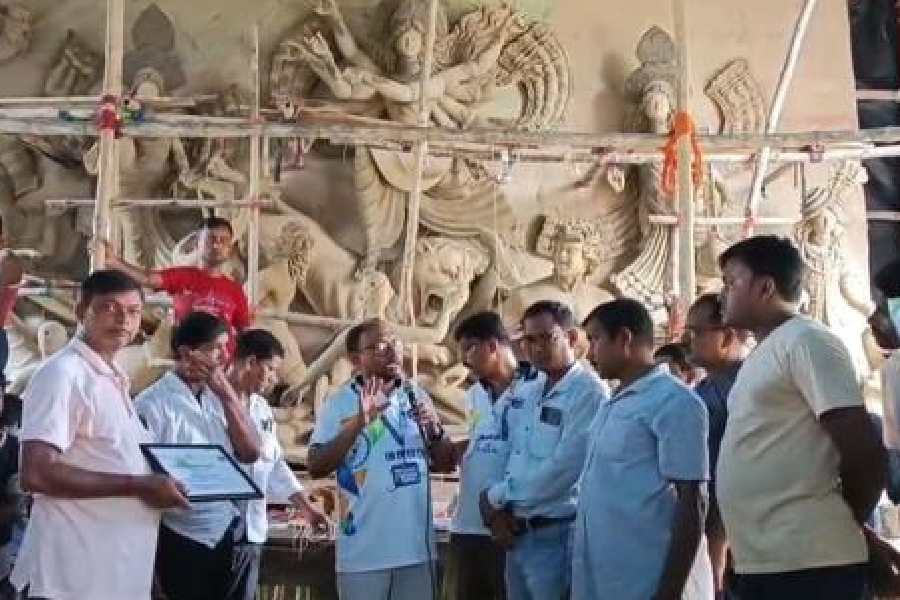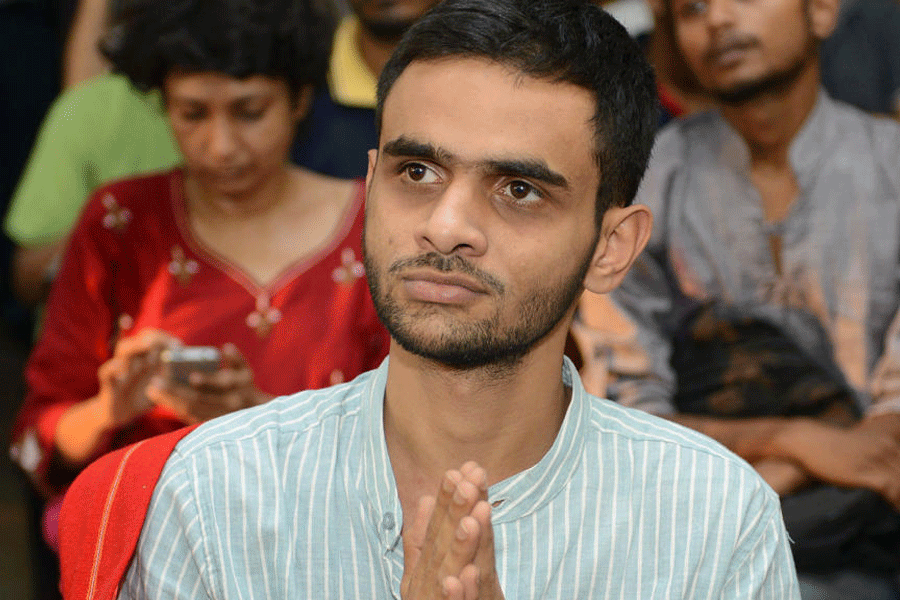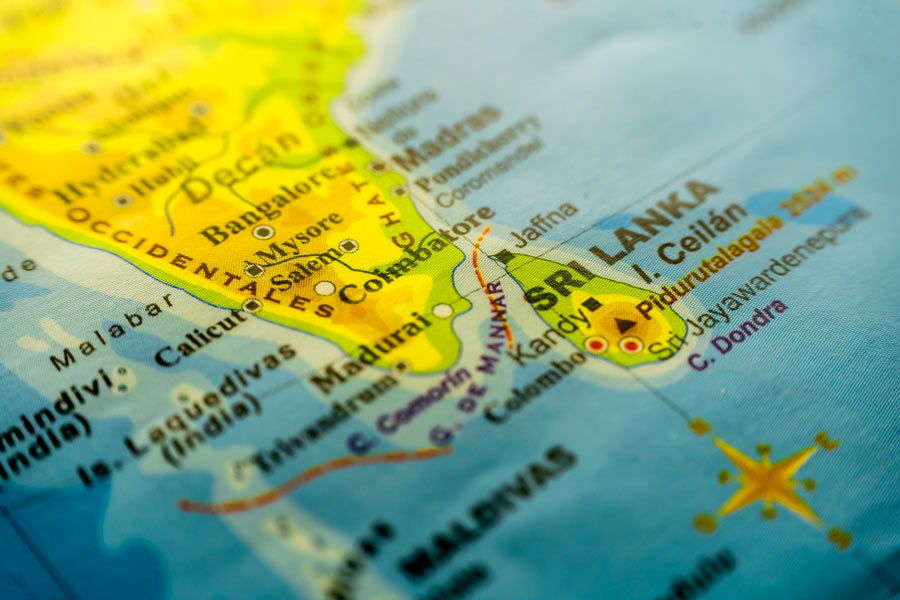We visit pujas, admire the artwork, eat in the food courts, make merry in the adjoining fairs, but do we stop to think of the carbon footprint of it all?
Variable Energy Cyclotron Centre (VECC) in AF Block, under the department of atomic energy, was the scientific partner in a study on this subject of sustainable festivities. The project was initiated by Rotary International District 3291 and aimed to examine the environmental, economic, and social impact the pujas create. For this, they got in touch with multiple stakeholders and over 160 pujas — some in Salt Lake and New Town, mostly in Bengal, and a few overseas.
“This project is in tune with the government’s Swachh Bharat Mission and is part of our scientific social responsibility,” said VECC director Sumit Som. “It will not bring overnight change, but we are confident it will make a difference in the long run. Our employees have done this painstakingly after office hours with this sole motive in mind.”
A team of about 20 volunteers from across the agencies was divided into smaller groups that visited stakeholders. In Salt Lake, they covered blocks such as IB, AE (Part 1) and Anushakti Abasan, the AC Block complex that houses employees of their own centre. In New Town, they went to pujas like Silver Oak Estate and Siddha Galaxia. These are their key findings —
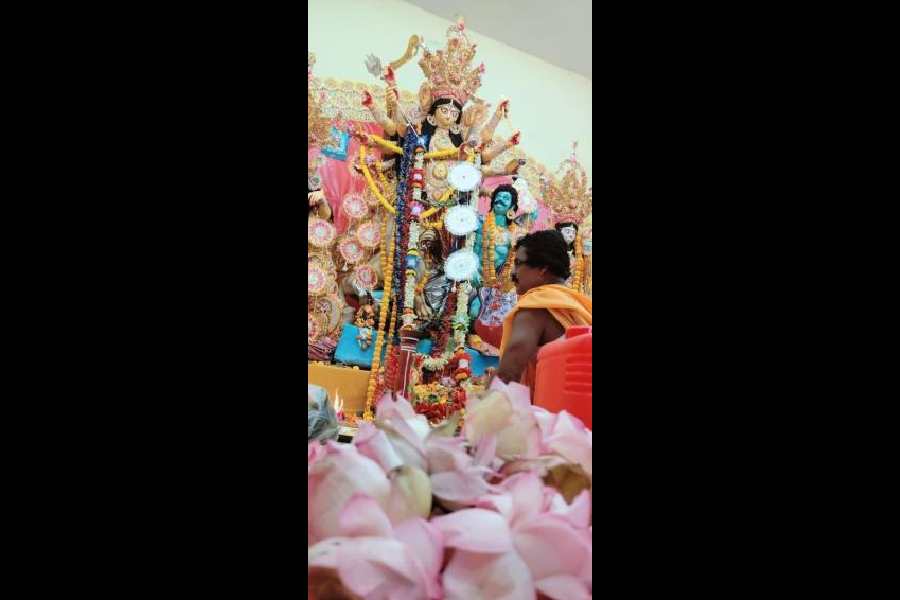
The Durga idol at Anushakti Abasan, that houses the staff of Variable Energy Cyclotron Centre
Preaching to priests
“Before the Pujas, a comprehensive course for priests is conducted at Sovabazar Rajbari. It spans about a week and details the rituals thoroughly. We contacted Jayanta Kushari, principal of Sarva Bharatiya Prachya Vidya Academy, who conducts it, and he allowed us time to speak to the group,” said scientist Sujoy Chatterjee.
The priests were aware of plastic pollution but felt unable to influence devotees who arrived with sweets or flowers in plastic bags. “To this, we asked them to reason citing religion. They should announce that cleanliness and purity are mentioned as important aspects of our scriptures and so the mandap should be free from plastic,” said Chatterjee. “Kushari was impressed and said he would include these in next year’s curriculum.”
However, a few of the 50-odd priests felt it would be more effective for the government to ban plastic production instead of asking priests to do the needful. “We asked them not to blame the government. The government has made helmets mandatory, but people still do not wear them. So, people’s will is more powerful,” he said.
Artisans’ dilemma
Many insights emerged here, such as the reason artisans are preferring thermocol to shola, that arises from a water plant and has traditionally been used in sholar saaj.
“This is due to a supply problem. Previously, 50 truckloads of shola would come to Kumartuli alone during season. Now, barely five to six arrive. With supply reducing, the price of shola is 10-15 times that of thermocol, and puja organisers are always trying to curb costs,” said Chandan Kumar Rath, who grew up in Midnapore at a time when shola was still abundant.
“We would cut shola into hats and mukuts to play with… but now the ponds they grew in have got converted into fisheries,” he explained. “To do this, people add chemicals to the water to kill plants and clear space for fish. Normally, the fish would have eaten these plants, but fishermen would rather feed the fish external food that makes them grow faster, for sale. If thermocol is blanket-banned, businessmen will turn to growing shola on a large scale.”
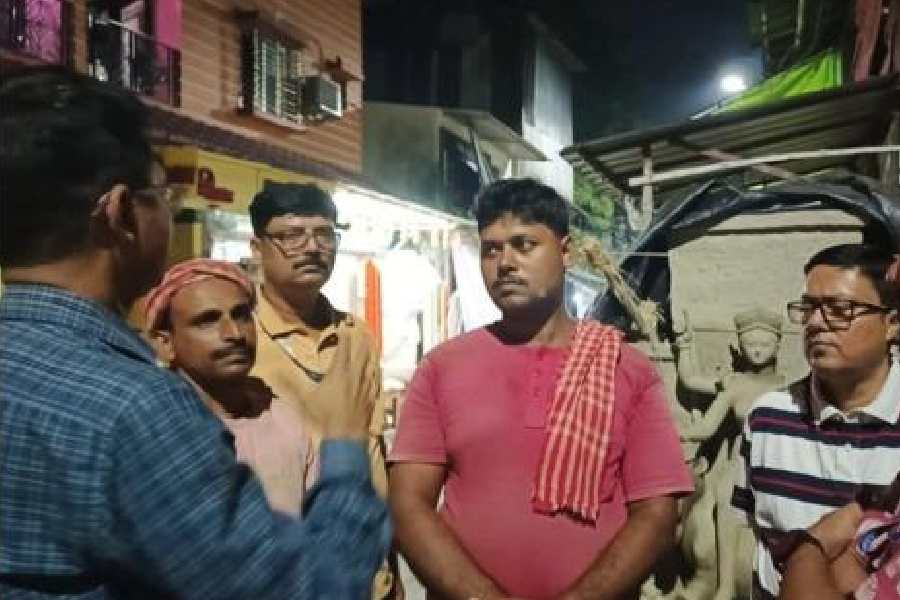
The team speaks to porters in Kumartuli who help transport the idols
Another issue concerns the health of the saaj shilpis (artisans who craft the idol’s jewellery). “We saw artisans working with zari on mukuts, with mica and other chemicals all over them, casually go over and start eating. They had no clue how harmful and carcinogenic this is,” Rath said. “And it’s not even enough to wash hands. Mica from hair shaking off and falling into food is just as bad. One needs to bathe thoroughly before eating.”
Artisans knew chemicals like lead and cadmium in the paint they use were harmful, “but neither is there ample supply of eco-friendly paint nor are those paints able to give the idols the glaze and shine that pandal hoppers look for,” said Ananda Das. “Still, we found a few artisans using some arrowroot varnish for a glaze. Eco-friendly paint is more expensive, but it is nothing for big pujas.”
Waste collectors’ risks
Bidhannagar Municipal Corporation and Kolkata Municipal Corporation authorities have been asked to nominate sanitation workers who toiled during the Pujas; VECC will felicitate them next week.
“We shall also interact with them and give them further tips on segregation and the like,” said Suman Guha, joint secretary of their Swachhata Committee.
The team also had urgent advice for those who retrieve puja materials from the river after immersion. “Even picking out flowers tied inside a plastic bag is not without risks. Organic items rot and release methane, inhaling which is bad for health; moreover, in this case, there is also exposure to plastic and other chemical components. They should be using masks,” said Rath. “Direct contact with these can cause erythema (skin redness and burning) and, through osmosis, enter the body, so it is not enough to simply wash hands. One must not touch these without gloves up to the elbows.”
Chatterjee also pointed out that artisans no longer receive the kathamo back after it is retrieved from the water. “Without that, they cannot recycle; they have to buy wood afresh,” he said.
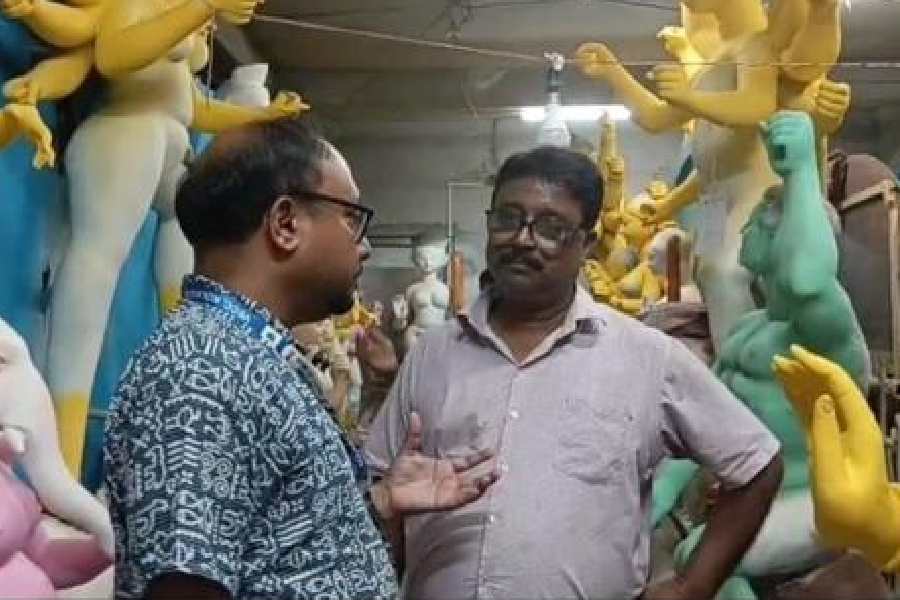
A team member shares advice at Kumartuli
Organisers’ resolve
Much depends on the awareness of organisers. Their in-house complex, Anushakti Abasan, for instance, held a zero-waste puja, with all waste being sent to recyclers. “But another puja in Midnapore was themed “save the ocean,” but used plaster of Paris for the decoration, that isn’t eco-friendly,” said Guha. Som added how plastic cups and plates are used widely during community lunches.
A major problem was that organisers did not know what to do with advertising banners post-puja. “Advertisers do not remove them, so they are sent to landfills. The Central Pollution Control Board, whose environmental guidelines we followed, has empanelled recyclers who will buy old banners from them, provided they are of a minimum thickness,” informed Guha.
The study also included pujas abroad, where they found exemplary responses from the UK, Germany, and South Africa. “Local laws there do not even allow flowers to be released in the river, only the ghot is used to pour water in the water. Fibre idols are reused for many years,” Guha said.
Responsible pandal-hopping
The team visited schools such as Kendriya Vidyalaya 1 in Salt Lake to explain the UN’s Sustainable Development Goals and ask them to spend an eco-friendly puja.
Das observed a rural–urban divide here. “In cities, we could ask kids what they would do with bottles after drinking cola at pandals, but in villages, kids often cannot afford all that. Even water, they said, they simply drink out of mugs at roadside shops. As for plastic, rural areas have the habit of recycling much more. Not just carry bags but even milk pouches are resold,” he said.
Social impact
A puja that scored high on social upliftment was inside Dum Dum Central Correctional Home. “We saw incarcerated youths learning to sculpt idols and do all decorations. It was a way to learn vocations that they hoped to use after they were released,” said Arindam Sikdar. “Those managing their lights at their puja were also keen to speak to us about technical details, since we knew about them.”
In many pandals, they checked for and recommended wheelchair access.
Livelihood
As per a 2019 study cited by the team, Durga puja generated a turnover of around Rs 32,000 crore a year, that was more than two per cent of the state’s GDP. “We want to accelerate this, maybe help start-ups in this field. For instance, renowned sculptors like China Pal, whose idols are sent to pujas abroad, have no idea on how to make such contacts themselves. If taught, they can eliminate middlemen,” Guha reasoned.
The team met many porters who stay in the city for these three months, transporting idols to pandals, helping with immersion etc. “The rest of the year, they struggle to make ends meet, doing odd jobs,” Guha added.
On Monday, they visited the ghats to see the aftermath of Chhath Puja and found them extremely polluted. They collected water samples from the river and sent to Jadavpur University, their knowledge partner. “We will repeat this study next year to make a comparative analysis,” said Guha.
Write to saltlake@abp,in

